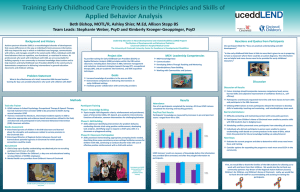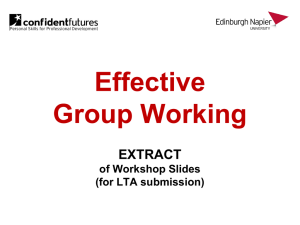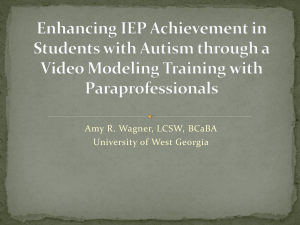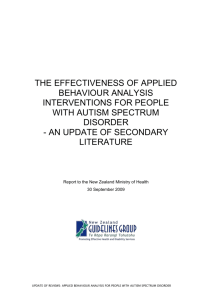Early Intensive Behavioural Intervention (EIBI)
advertisement
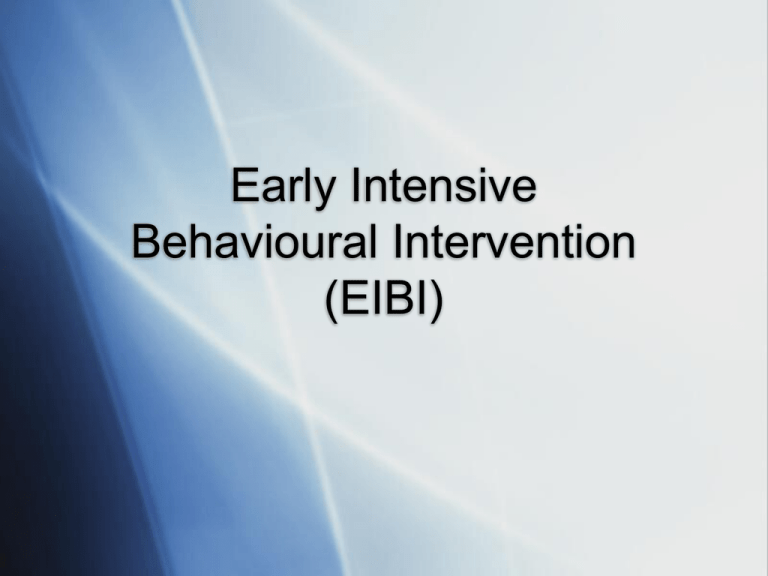
Early Intensive Behavioural Intervention (EIBI) EIBI and Lovaas (1987) UCLA Young Autism Project (YAP) 1970-1984 Early Less discrimination between environments More likely to generalize and maintain treatment gains Intensive 40+ hours per week Behavioural Intervention Using Modern learning theory (Years 1-3) Build complex behaviour and suppress pathological EIBI and Lovaas (1987) 1st year: Reducing self-stimulatory and aggressive behaviour, teaching imitation, toy play, extending treatment into family 2nd year: Teaching expressive language, play with peers, extended to community (preschool) 3rd year: Teaching of appropriate and varied expression of emotions, reading, writing, arithmetic, observational learning Lovaas (1987) Results Experiment (n=19) Control (n=40) Normal 47% 2% Mildly retarded 40% 45% Profoundly retarded 10% 53% Video Autism Behavioural Intervention Queensland (ABIQ) ABIQ.wmv Neurobiology of Autism Electrophysiological studies: EEG and ERP Neural basis of face processing, non-verbal Face sensitive ERP component (N170) Large negative ERP component with a latency of 170ms Neurobiology of Autism Lateralization Failure of normal right hemisphere specialization for faces Face Processing Autistic Development Perceptual/Cognitive Hypothesis Perceptual binding (extracting), general deficit (FG), and/or dysfunction of a neural mechanism Social Motivation Hypothesis (SMH) Primary and secondary deficits (all behavioural and physiological deficits are the result of a deficit in social motivation) Social Rewards “Social motivation impairments are related to difficulties in forming representations of the reward value of social stimuli” (Dawson, 2005) Dopamine pathway is activated by social rewards Reward value Motivation Attention to faces (exposure+) Specialization Implications for EIBI Make social interaction more rewarding and meaningful Interventions using ABA and EIBI reward using conditioned reinforcement EIBI may facilitate the development of the face processing system Criticism of EIBI Methodological problems in research Which children are good candidates? Ethical concerns Financial matters Future Research Using MRI without sedation to assess brain development in high-risk infant siblings (Zwaigenbaum et al., 2005) Behavioural enrichment and behavioural motivation to study brain plasticity (Kilgard) EIBI to reach normal brain functioning in terms of neural speed and cortical specialization (Dawson et al., 2005)
